
Institute News
During June and July, the Institute was very pleased to welcome the following new Overseas and UK Student members, many of whom joined us from our North-East Branch Sustainability Event. We wish them all every success in their future careers and ICorr journeys.
Name/University
• Narenthira Prasath Dhandapan – Newcastle University – 16 June 2023
• Long Duong – Newcastle University – 16 June 2023
• Lilibeth Urdaneta – Newcastle University – 16 June 2023
• Mohammed Aleliw – Newcastle University – 16 June 2023
• Sahish Bhosle – Newcastle University 16 June 2023
• Alfie Davies-Varnier – Newcastle University – 16 June 2023
• Chirag Padmesh Kumar – Newcastle University – 16 June 2023
• Edwin Ramirez Teljeda – Newcastle University – 16 June 2023
• Al Salamah Salim – Newcastle University – 16 June 2023
• Srivatsava Podicheti – Institute of Aeronautical Engineering (IARE) – 17 June 2023
• Jack Fergus – Falmouth University – 19 June 2023
• Mohamed Ibrahim – Newcastle University 19 June 2023
• Abhijeet Kulkarni – Newcastle University – 19 June 2023
• Ashhab Mulla – Newcastle University – 19 June 2020
• Hannah Wright – Newcastle University – 20 June 2023
• Ragav Krishnakumar – Newcastle University – 20 June 2023
• Muhammed Mansaf Maheen – Newcastle University – 20 June 2023
• Nazia Farooqui – University of Edinburgh – 20 June 2023
• Raisa Kamila – Newcastle University – 21 June 2023
• Billington Harvey – Liverpool Moore’s University – 21 June 2023
• Tamsin Dobson – University of Bristol – 26 June 2023
• Christopher Hardman – University of Bristol – 26 June 2023
• Ali Haider – University of Punjab – 02 July 2023
• Ibrahim Alhajji – King Fahd University of Petroleum and Minerals – 03 July 2023
• Leandro Liveira – University of Sao Paulo – 03 July 2023
• Saif Ramy – University of Leeds – 11 July 2023
Our Student Bursaries Scheme with University of Manchester is now approved and will commence
this September

Saif Ramy, ICorr Internship Student
The Young ICorr Internship (Anne Neville Award) has also been sanctioned for support by ICorr Council at University of Leeds with additional funding kindly provided by LBBC Baskerville. The winning ICorr Student member Saif Ramy will commence his internship on 3rd July for 10 weeks. We offer our many congratulations to him and sincere thanks to Danny Burkle for arranging this and also to LBBC Baskerville for their support.
Institute News
Our Midland Branch is very active again under the new leadership of Bill Whittaker, with a full technical programme planned for the coming 2023–24 technical session. On September 14, there will be a branch meeting and visit to Manchester University Metallurgy and Corrosion group within the Department of Materials, for a tour of the brand new, state-of-the-art building. The new Home for Engineering and Materials boasts a range of teaching spaces, lecture theatres, multi-purpose study areas, social spaces, and fantastic laboratories. With a guide to the facilities from the students and corrosion teaching staff.
Event Schedule:
• Start at 3 pm: afternoon welcome refreshments.
• Lectures/talks from Midland visitors and from Manchester.
• Later, a move to the restaurant for chatting and finger food from 5:30 pm (soft and hot drinks).
• Tours in three groups of the Department of Materials, approx. 5–10 people per tour (20 minutes per tour),end 7pm.
Only 25 places available, please confirm attendance ASAP to Bill Whittaker at the midlandschair@icorr.org”
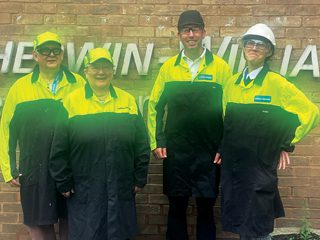
Institute News
North West Branch had a successful AGM, held at the Sherwin-Williams factory in Bolton. Special Thanks to Malcolm Morris and John Donoghue of Sherwin Williams for a fascinating tour of the facility, which produces corrosion protection and intumescent coatings applied to a wide range of structures in use today.
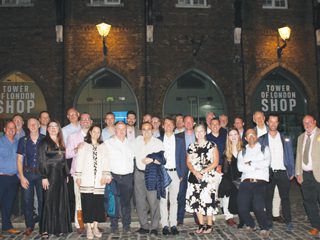
Institute News, Uncategorized
The branch has started a series of lunchtime webinars aimed at professionals in the corrosion industry. The first of these was held on June 8, 2023, when Kjell Wold presented “Technology of Corrosion and Erosion Monitoring”, and the feedback was overwhelmingly positive.
Kjell Wold, a corrosion expert with over 30 years of experience, gave a comprehensive overview of the latest technologies for corrosion and erosion monitoring. He discussed the different types of monitoring methods, the benefits of each method, and the challenges of implementing these methods in the field.
Kjell also discussed how high-accuracy UT data can be used proactively for process optimisation in addition to integrity management. He gave several examples of how this data has been used to improve the performance of pipelines.
The webinar was very informative, Kjell was an excellent presenter, and he was able to keep the audience engaged throughout the presentation. The Q and A session was also very informative, and audience thoroughly enjoyed it.
The webinar series continued on July 13, 2023, with our fellow committee member, Ennery Leon, presenting “Cathodic Protection: Field Tests and Troubleshooting.”
Ennery has more than 17 years of experience in the petrochemical, steel-making, and oil and gas industries, and is currently the Upstream Asset Integrity Team Leader at TAQA Global in the Netherlands. He detailed the field testing that can be used to evaluate the performance of a coating and CP system, eg, structure-to-electrolyte potential, CIPS, ACVG, PCM etc.
He also shared some tips and tricks from his experience in CP troubleshooting.
The branch held a summer social event to bring together the local corrosion community, with the object of growing the branch’s engagement and membership, on June 29, 2023, at the Tower of London, and it was considered a great success. The event was well-attended by around 40 professionals, including some of the branch committee members, and the atmosphere was festive. We are grateful to our committee member, James Lawson, for organising the event, and to Carboline for sponsoring it.
The tour of the Tower of London was well-organised and informative. Our guide was knowledgeable and engaging, and did a great job of bringing the history of the Tower to life. We learned about the different uses of the Tower over the centuries, from a royal residence to a prison, to a place of execution. We also had a private tour of the Crown Jewels which was amazing to see.
Guests then enjoyed a delicious dinner at the Tower, followed by the Passing of the Keys ceremony, which was a highlight of the evening. It is a centuries-old tradition that takes place every night at the Tower of London. The ceremony involves the Chief Yeoman Warder locking the gates of the Tower and delivering the keys to the Constable of the Tower.
The ceremony is full of pomp and circumstance, and it is a truly memorable experience. We were able to watch the ceremony from a privileged vantage point, and we felt like we were part of history.

Some of the attendees.

Institute News
On June 22nd and 23rd, the North-East Branch, in conjunction with NEIMEE, held a highly successful conference and exhibition entitled ‘Integrity Engineering for a Sustainable Future (IESF) at the magnificent Neville Hall in the centre of Newcastle. Over 60 guests attended this special event, coming from all over the UK and as far afield as Scandinavia and The Netherlands. All enjoyed a full day of presentations, followed by field trips on the second day. In between the work, there were plenty of opportunities to network, and a gala dinner was held at the end of the first day and greatly enjoyed by all.
The conference was held in the well conserved, grade II listed, Neville Hall, which dates back to the 1860s. Neville Hall is the head office of the North of England Institute of Mining and Mechanical Engineers (NEIMEE) which partnered with the NE Branch in hosting the conference. The rooms in Neville Hall still have their original features (see photos). The lecture theatre and library are particularly impressive, and not many industrial conferences have been held in such remarkable buildings.
Past President Trevor Osborne opened the conference and was closely followed by keynote speaker Prof Jon Gluyas of Durham University, who gave an insightful and humorous presentation entitled “Energy: a sustainable future built on an unsustainable past” commenting on the links between population growth and energy requirements and commenting on possible sustainable sources of the energy required.
A busy day saw a further nine presentations (see table), informatively covering a wide range of topics from carbon capture and storage to wind energy. Topics included new construction, repurposing’ and repair. Old and new technologies were
discussed in terms of sustainability, from solid anodes to drone repair of wind tower blades.
1. Energy – A Sustainable Future Built on an Unsustainable Past. Prof. Jon Gluyas – Durham Earth Sciences
2. CCS Corrosion and materials selection overview and challenges, the approach of an integrated energy company. Roberto Morana – BP – Net Zero Teesside
3. How do you take sustainability into account during design? Birit Buhr – European Energy
4. Advances in wind blade coatings and testing. Edvard Daehlen – Carboline
5. Mitigating Environmentally and Sustainability Impacts of Cathodic Protection in Seawater. Winston Shepherd – Impalloy Ltd
6. Flying Drone Repair of Wind Turbine Blades – Better, Safer and Faster. Chris Kirby – Reblade
ApS – Denmark
7. Addressing hydrogen pipeline repurposing safely & economically. Daniel Sandana – Rosen Group
8. Non-Destructive Testing Challenges in the Net Zero World. Dr Patricia M Conder – ESR Technology Ltd
9. Development of coatings to last the life of the Asset. Willem Horn –AkzoNobel
10. Why paint when you can patch with Easy Qote. Dinko Cudic – Seal for Life Industries
The first day culminated with a conference dinner in the old library, a magnificent room, with books stored behind wooden doors and a gallery reached by ladder to access books stored higher up on the wall. An opening address was given by Trevor Osborne and the meal closed with some final encouraging words from current ICorr President Stephen Tate.
The second day was made up of two site visits in the nearby town of Blyth. Ore Catapult is the UK’s leading technology innovation and research centre for offshore renewable energy. The visit was hosted by Tom Chaplin, Marketing Manager at Ore Catapult.
Their modern facility in Blyth includes an impressive 100-metre-long testing hall capable of testing the biggest wind blades, with plans to increase the capacity as blade size continues to increase. The site also has test facilities for wind turbine powertrains with a capacity of up to 15 MW. Away from the wind turbines themselves, they also have the DARE Digital, Autonomous, and Robotics Engineering Centre.
The second tour was to Bates Colliery, hosted by Charlotte Adams, Principal R&D Manager for Mine Water Heat at The Coal Authority. Bates Colliery is one of a network of disused mines in the north-east where water is being pumped out in large quantities to control the water levels in the mine network.
Using solar power, the water pumped up is treated, settled, and filtered through natural reed beds before being released into the River Blyth. Due to the depth of the mine, the water comes up warm and could be used to generate 5 MW of geothermal energy—a good example of a sustainable legacy from what is considered a polluting industry. Going forward, it has the potential to develop 5 MW of electricity from the groundwater, enough to power the local school.
Ore Catapult is the largest R and D Test centre for wind turbines in the world, currently testing 100 m blades but looking to increase length capacity by 50%. Already, it’s so large that you can drive a double-decker bus in at the end. An incredible facility that tests gearboxes the size of which you can’t imagine, and to see them close-up was breath taking.
This is all wrapped up by “Energy Central,” a partnership of all the Net Zero related businesses; one of the initiatives being to establish and promote local skills to meet the demand.
A fantastic example of the transition from ‘Unsustainable to the Sustainable’.
The North-East Branch Committee wishes to thank all attendees and organisers who made this such a successful and memorable event and hopes the conference demonstrated the opportunities for ICorr in the North-East. A special welcome also goes to our new NE Student ICorr members who actively participated on both days.
After a short summer break, the committee will turn its thoughts to some of the many questions asked after the conference: “Will there be another?” Can we have a NE Christmas Dinner?” “When are the next technical events?” Any interested sponsors should contact nechair@icorr.org
The NE Branch would like to thank all of the sponsors and exhibitors who made the conference possible; Carboline, AkzoNobel, Reblade, Safinah, Metec, Corrosion Integrity Management and The Royce Institute.
*Organising Committee, Matt Fletcher (Chair), Josie Watson (Treasurer), Bruno Ravel, Barry Turner, Patrick Johnson, Simon Daly, Andrew Dobrzanski and David Mobbs with a special thanks to Dr David Bell who expertly controlled all the IT and recordings on the day.
All of the presentations can now be viewed on the ICorr or NEIMME websites.
Please refer to the ICorr Website: North East Branch – Institute of Corrosion (icorr.org) under Local Technical Programme 2023.
CAPTIONS:
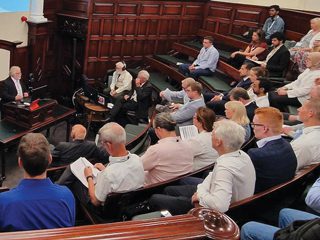
Keynote speaker Prof Jon Gluyas of Durham University.
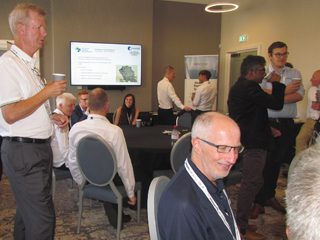
Networking with Exhibitors.
Summary of Technical Presentations.
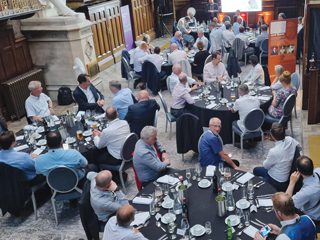
Conference guests at Dinner in the Magnificent Neville Hall Library.
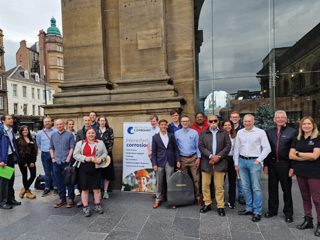
Guests await Site Visit Registration at Newcastle Central Station
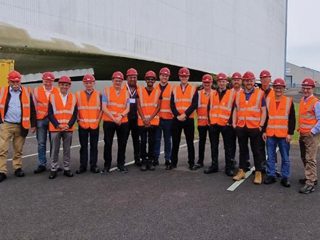
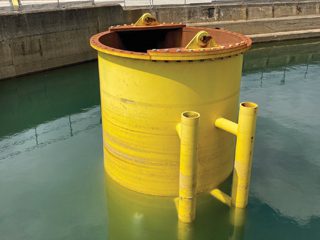
Delegates at Ore Catapult site visit outside the Blade Test Hall and nearby Monopile Testing Facility.
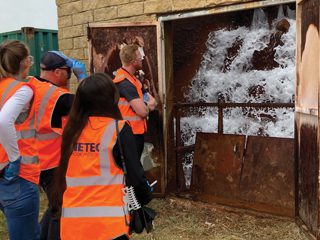
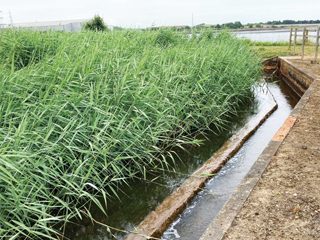
Pumps at Bates Colliery.
Reed Beds before River Blyth discharge.

The Digital, Autonomous and Robotics Engineering (Dare) Centre at the Offshore Renewable Energy (ORE) Catapult’s testing facility in Blyth.
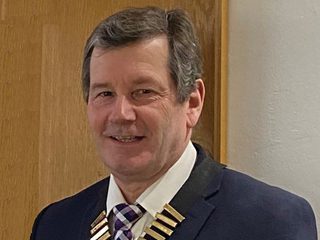
Institute News
Dear Members,
A very special welcome to our new Overseas Members and our new Student Members who recently joined us. Please let me know if there is anything at all l can assist with to improve your membership experience with ICorr.
Our student Bursaries Scheme with The University of Manchester is now approved and will commence this September.
We are also working hard behind the scenes to offer a wider range of Training Courses, and to expand our technical programmes for 2023-2024, and with that in mind, l must mention our newly launched Microbiologically Influenced Corrosion training course. You will find a poster for this in your magazine, please display it in your workplace for others to see. Thank you. Details of our Corrosion Under Insulation (CUI) course will also be announced shortly.
A lot more has happened since the last issue, in June our Northampton HQ hosted the Engineering Council Licence review for our Chartership Scheme, with a great result from that audit. Under the skilled eye of David Harvey, we expect to move forward with ICorr’s own CEng Direct Scheme in 2024.
Also at HQ, our Correx team is preparing to roll out the new ICATS Apprenticeship Scheme, with Kevin Harold working hard to launch it soon. The first two ICATS apprentices were tested
on July 12. https://www.icorr.org/correx/
Our NE Branch Sustainability Conference was a hugely successful event in Newcastle on June 22nd and 23rd, a true showcase for all that ICorr sets out to achieve in the fields of corrosion education and industrial partnerships. Very well done to all the NE committee members who have great plans going forward.
On June 28, the North-West Branch held their AGM and hosted an industrial visit to the Sherwin-Williams paint facility in Bolton. Interaction with the industry like this keeps everyone up-to-date and helps our branches thrive. A special thanks to Greg and all involved there.
On August 22, we will once again be offering our Corrosion Awareness Day in Aberdeen, which has proved very popular in previous years. See our events for August 2023 – Institute of Corrosion (icorr.org).
Finally, a reminder for our Corrosion Science Division’s 64th Corrosion Science Symposium (CSS) at the University of Bristol on September 10–12, 2023, including the UR Evans Award and Plenary Lecture. We do hope you can support that.
All our branches are becoming increasingly active in the U.K., and we hope to have some Overseas offerings soon too!
We very much look forward to you joining us soon, either in-person or online, for our 2023- 2024 ICorr Technical Sessions run by our UK branches.
Our ICorr calendar is regularly updated,
https://www.icorr.org/events/
I hope you will maximise the benefits of your membership by participating in these fantastic networking events.
Wishing you a great summer break.
Stephen Tate, President Institute of Corrosion

Institute of
Corrosion
President,
Stephen Tate

